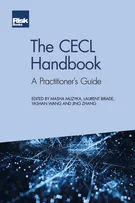Foreign Exchange Markets
Foreign Exchange Markets
Foreword
Introduction
A Brief History of the FX Market’s Evolution
Foreign Exchange Markets
Predicting FX Movement
Basic FX Instruments
Trading Floor Dynamics
FX Options: An Intuitive Approach
Famous Formulas, Fame and Fortune
Getting to the Formula and the Correct Probability Distribution
The Greeks – A Practical Approach
Portfolio Management and Second-order Greeks
FX Options Trading Book & Risk Measurement
Hedging FX Risk at Corporations
You Have Options
Situations Gone Mad, From the Most Complex to the Simplest
Speculators and Hedge Funds: How Do Portfolio Managers Make Money?
Speculating and Hedging: The Fundamental Differences
Epilogue
For those not involved in the FX market, it must be very difficult to get a palpable sense of what it is. Exchanging one currency for another happens when you go to the bank or the automated teller machine (ATM) and exchange money for your vacation; it happens on the second floor of some shopping mall in Singapore by some guy in a kiosk – no computer, and he makes a tighter price than JPMorgan; it happens on the fancier streets of Buenos Aires, where every five steps someone is yelling “cambio”; it happens when IBM sells its artificial intelligence (AI) services to a Chinese municipality; and it happens when the Federal Reserve Bank buys and sells currency to manipulate FX rates and implement interest rate policy.
FX is both omnipresent and a self-perpetuating creation. Although it permeates every aspect of global interactions, the heart of the system is really a market concentrated into a few major players, located in a few central locations and trading just a handful of currencies. In this chapter, we will explore who trades FX, where it happens, how big the market is, and look at just a few of the conventions and traditions. Some of these qualities have led to behaviour that
Copyright Infopro Digital Limited. All rights reserved.
You may share this content using our article tools. Printing this content is for the sole use of the Authorised User (named subscriber), as outlined in our terms and conditions - https://www.infopro-insight.com/terms-conditions/insight-subscriptions/
If you would like to purchase additional rights please email info@risk.net
Copyright Infopro Digital Limited. All rights reserved.
You may share this content using our article tools. Copying this content is for the sole use of the Authorised User (named subscriber), as outlined in our terms and conditions - https://www.infopro-insight.com/terms-conditions/insight-subscriptions/
If you would like to purchase additional rights please email info@risk.net





